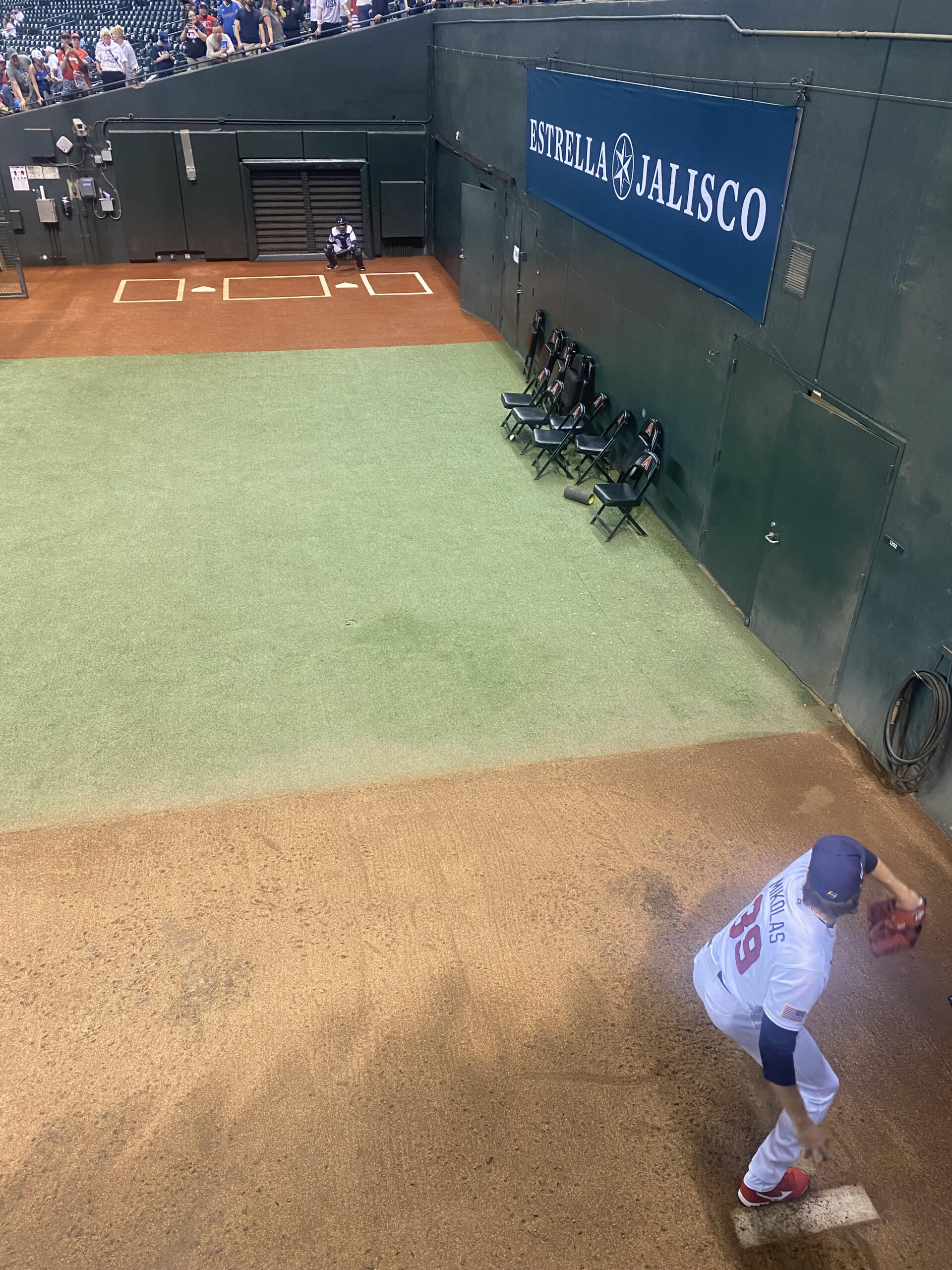Understanding different pitching methods is essential for baseball players and fans alike.
One such action is the quick pitch, which is against the rules in baseball, but pitchers still can get away with quick pitching from time to time.
A quick pitch is when the pitcher doesn’t allow the batter enough time to set up or pause before throwing the ball.
Not giving the hitter enough time to prepare for a pitch could result in injuries because the hitter may look the other way when the pitch is being delivered.
Contents
Recognizing a Quick Pitch
The quick pitch is one such tactic that, when used effectively, can greatly impact a game’s result.
Let’s define the quick pitch in baseball and look at some illustrative instances to help you understand it better.
What is a Quick Pitch?
When a pitcher throws the ball without giving the hitter enough time to position up and prepare for the pitch properly, it is referred to as a quick pitch
A quick pitch is intended to throw the batter off guard, which may lead to a strike or an easy out on a fly ball or ground out.
Quick pitches are not permitted in baseball because they are risky and may give pitchers an unfair advantage or pose an injury risk to hitters.
According to the rules, the batter must have enough time to prepare in the batter’s box before the pitcher can throw the ball.
Failure to do so can result in either a ball or a balk, depending on the circumstance.
For instance, a quick pitch can result in a balk if there are runners on base, but a ball if there are no runners on base.
Although throwing a quick pitch could seem like a smart move for the pitcher, it’s crucial to remember that it’s against the rules of baseball.
Why the quick pitch is prohibited
Because the pitcher throws the ball before the batter is positioned and prepared in the batter’s box, a quick pitch is forbidden in baseball.
This strategy may offer the pitcher an unfair edge because it may catch the batter off guard, which could result in a strikeout or a simple out via a fly ball or ground out.
All levels of baseball, from minor leagues through professional leagues, police quick pitches.
This is done to protect players and uphold the fairness of the game.
Several other circumstances, such as the pitcher failing to come to a complete set before throwing the pitch, can make a pitch illegal.
Baseball regulations state that a pitcher makes an illegal pitch if they make any gesture naturally connected with the pitch when touching the plate without delivering it or if they feint a throw to first base without actually making the throw.
MLB Rules and Regulations
According to MLB rule 5.07, a pitcher must pause after the stretch, holding the ball in both hands in front of their body, and come to a complete stop before delivering the ball.
While the rules for quick pitches are very clear, the enforcement can vary depending on who the umpire is and how good the pitchers are at disguising the quick pitch.
Delivery
The pitcher and the home plate umpire are in charge of ensuring fair play throughout the pitching delivery.
The umpire has the authority to call “time” and add one ball to the batter’s count if a pitcher purposefully delivers a fastball when the hitter is not in the batter’s box.
The ball can then be returned to play after the umpire has informed the pitcher of the decision.
The game’s safety and fairness for baseball pitchers and batters depend on following the regulations regarding quick pitches.
Conflict and Debate
Luis Garcia, Regular Windup vs. “Quick Pitch” Windup. pic.twitter.com/iodxQw9Zvb
— Rob Friedman (@PitchingNinja) August 18, 2022
Baseball quick pitches have been a source of discussion, partly because they can be risky and players toe the line of what is or isn’t a quick pitch.
In these discussions, player safety and fairness are the two key issues that come up.
Fair Play Issues
2 great examples of guys already using the clock & its rules to their advantage:
— Turner Givens (@TurnerGivens) March 10, 2023
Scherzer held until batter calls time (can’t call time again). Then quick pitch the moment the batter resets in the box.
Peralta quick pitches 3 times in a row. Making for a very uncomfy AB. (3/8) pic.twitter.com/HsOfLLIDuu
The hitter may be caught off guard if the ball is thrown before they are poised and prepared, which could lead to an easy strike, fly ball, or groundout for the pitcher.
Some people say that a batter should always be ready because this strategy is just a part of the game’s tactics.
Players’ Safety Issues
The safety concern with quick pitches is what concerns me more.
Throwing before the batter is ready puts players in danger since they may not have enough time to react or defend themselves.
Quick pitches have been considered prohibited in some circumstances due to this risk, with the final judgment being made based on the specifics of the game and the umpire’s judgment.
Final Word
While it is difficult to enforce every quick pitch, most pitchers and batters show enough mutual respect for the other party to ensure they are ready for the pitch to be delivered.
Baseball is doing a ton this year to speed up the game, and quick pitches will be something umpires are keeping a close eye on this year.

